Eight
SCENES
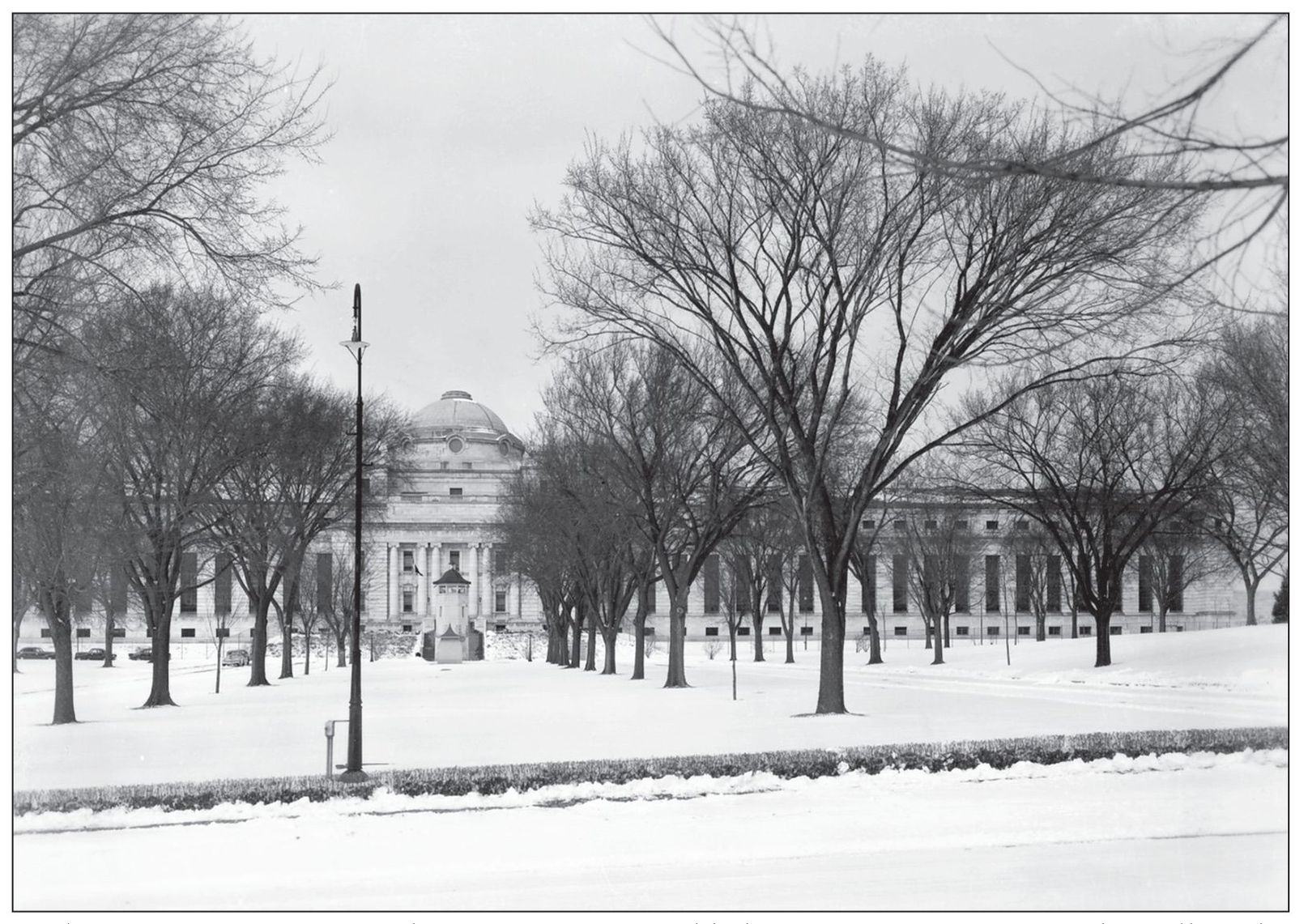
Looking from across Metropolitan Avenue on a cold, dreary morning after snow has fallen, the U.S. Penitentiary Leavenworth looks stoic and peaceful. However, the weather reminds those on the outside of the cold, harsh realities that lay beyond the front gate. For 110 years, tourists have stood in this very spot wondering what it is like behind the massive stone walls with barred windows. Forty-three stairs lead up to the front door. To many, they are the last steps of freedom; to a few, it is a job. (Author’s collection.)

The rotunda lies 132 feet below the dome. Designed after the Capital building in Washington, D.C., each of the four main cell houses radiate from this great hall. Early inmates were forbidden to walk this area unless they were escorted by a guard. Inmates were not allowed within the inner circle without being invited by staff. Years after this photograph was taken, the water fountain was removed, and a desk was placed in the center. It operates much like a precinct desk at any major police department. (Author’s collection.)
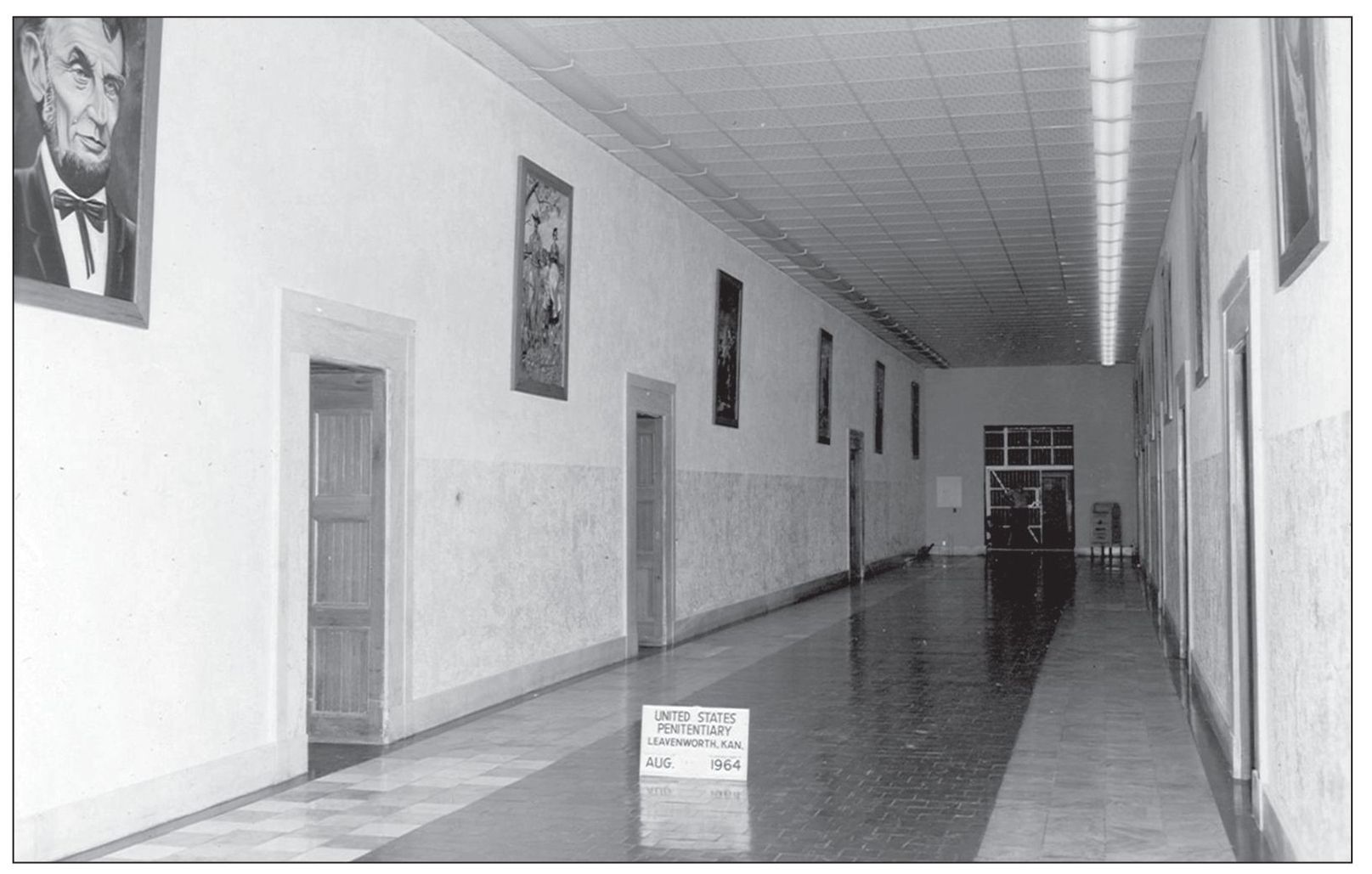
Inmates are not permitted to walk down the center of the main corridor. They must walk down on the right side and back on the left. This helps staff respond to institution emergencies. Over the years, many different offices have served the inmates from this area. The inmate commissary was once located in this hallway. Artwork, motivational posters, and terrazzo have adorned the main corridor over the years. (Courtesy Chuck Zarter.)

Warden Thomas W. Morgan established the first institution fire department. Inmates were trained in firefighting techniques and competed in local competitions, winning several. For many years, the institution boasted about having the best volunteer fire department in the area. The practice of using inmates to fight fires was abolished in the early 1990s. (Author’s collection.)

The penitentiary cemetery, affectionately known as Peckerwood Hill, was established for those inmates who died while in custody. Many of the inmates buried in the cemetery died of illnesses contracted before incarceration. Dr. A. F. Yohe reported that many inmates died from influenza, tuberculosis, syphilis, and morphine addiction. Of all the inmates buried there, the most famous is none other than George “Buggs” Moran, the notorious Chicago gangster who died of lung cancer in 1957. (Author’s collection.)

Long before modern security devices, small towers dotted the landscape beyond the perimeter fencing. Cat walks allowed tower officers the ability to get closer to would-be escapees or rioting inmates. (Author’s collection.)

This photograph shows a dining room remodeling project during the 1960s. (Courtesy Gail Leavitt.)
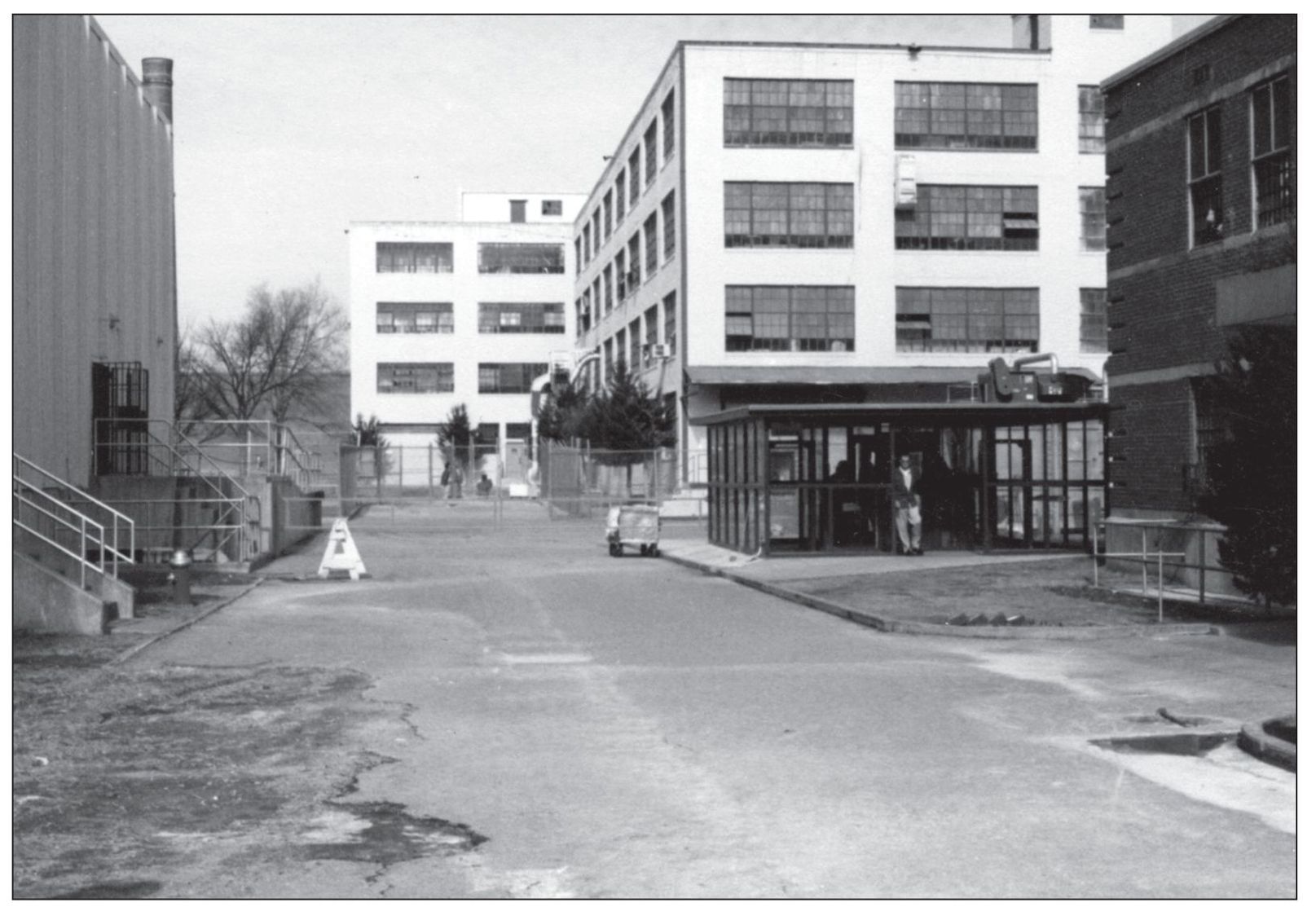
Here is a view of the east yard officer’s station from the 1980s. (Author’s collection.)

Originally built as the institution’s main storeroom, this building housed the vocational training department and recreation department. Some retiree’s claim that this building was torn down because it became an inmate battleground and a death trap for officers. (Author’s collection.)
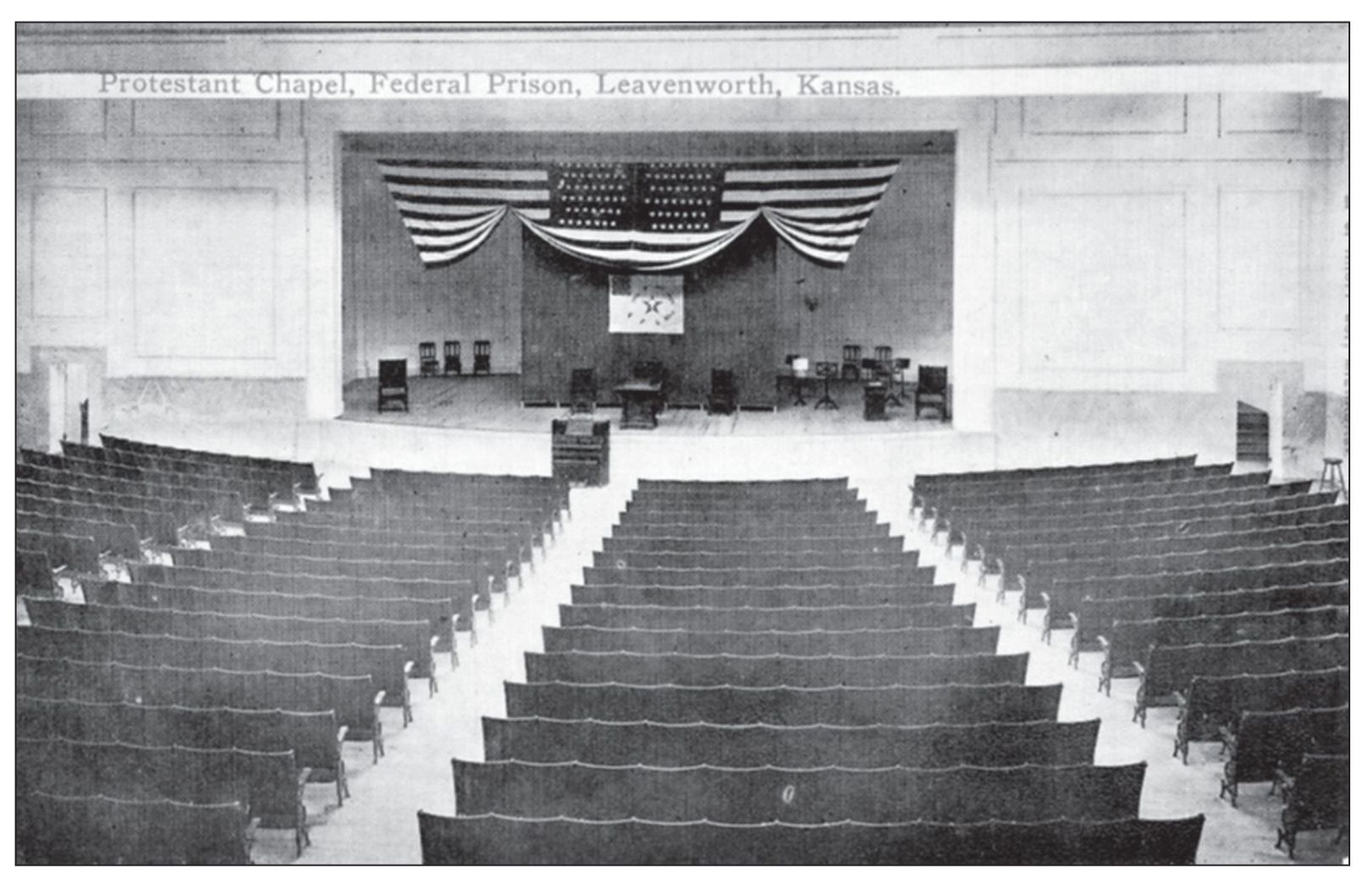
This early-1900s postcard shows the institution auditorium and Protestant chapel. (Author’s collection.)

“They are not here for singing too loud in church!” Taken the morning after a 1931 disturbance, this photograph shows the destructive nature of inmates. Though Leavenworth has held the reputation of being the toughest federal prison in the country, there have been four riots in the institution’s history, in November 1901, in August 1929, in June 1973, and in July 1992. In each instance, staff members were able to bring the institution back under control in less than eight hours. Inmates manufactured weapons from metal, wood, plastic, glass, toothbrushes, combs, and even trash bags. Once, while strip-searching an inmate, an officer found a rubber phallus that contained a .22-caliber zip gun. After receiving the Cuban rioters from Atlanta and Oakdale, Louisiana, officers were introduced to the Cuban cocktail, which was a mixture of urine, feces, and sour milk. As the officers walked the galleries, the inmates got their attention and attempted to throw it in the officers’ faces. (Author’s collection.)

Trains entered the institution daily, carrying supplies and new inmates. As the trains entered the chute, the outer gate was closed and the inner gate was opened. To the left is the brick factory. (Author’s collection.)

Early inmates congregated after each meal in two-gang alley awaiting the work whistle. Inmates exited the dining room on the right and reported to work in the shop areas on the left. In this area were the tin, sheet metal, carpenter, plumbing, electric, and tailor shops, along with the north wall warehouse, main storeroom, and the barbershop. (Author’s collection.)
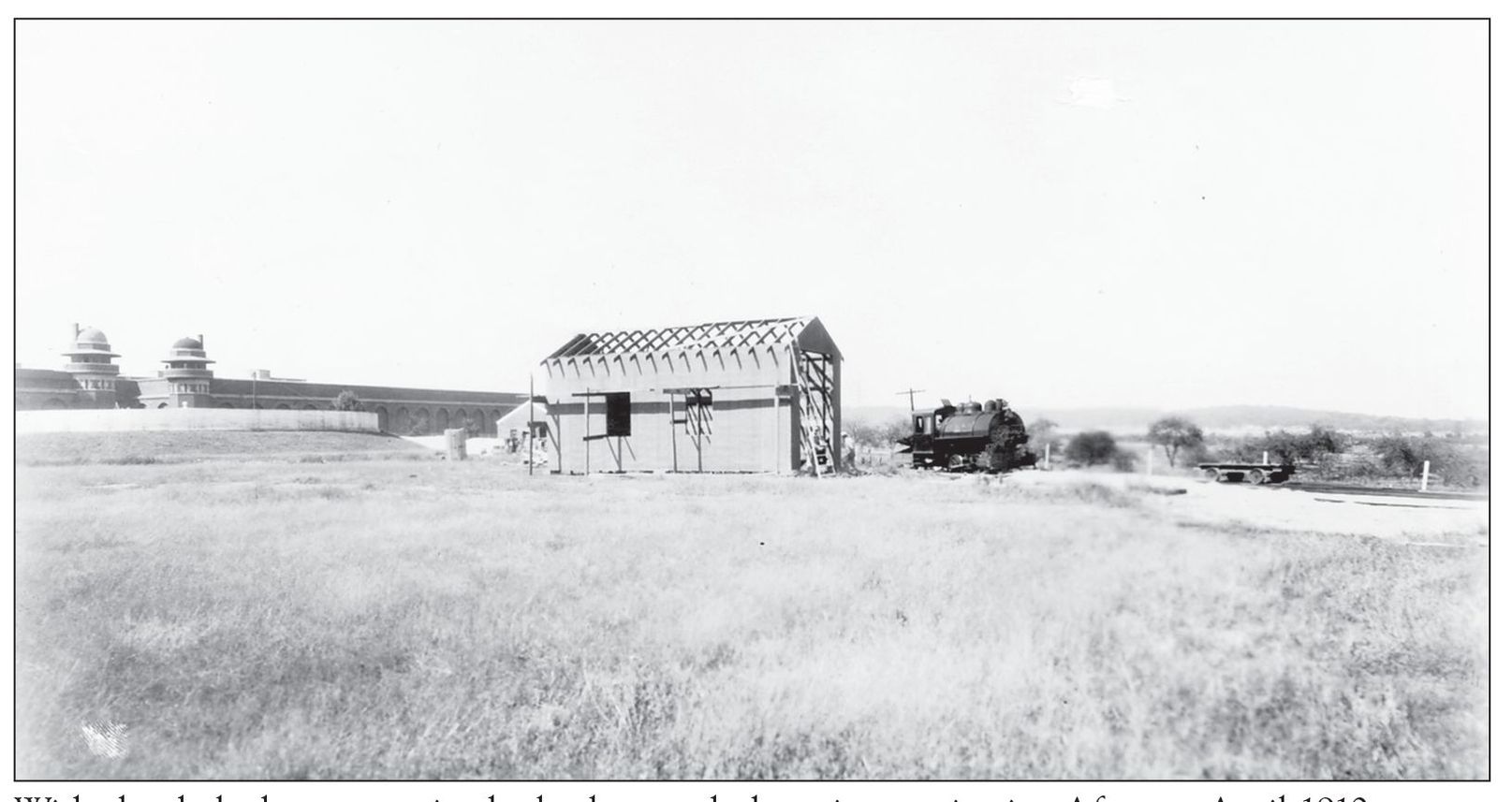
With the derby hat towers in the background, the prison train sits. After an April 1910 escape, a smaller steam engine was purchased. In October 1910, lunch was being delivered to the rock quarry. As an inmate stepped down to throw a rail switch, guard J. N. Crabtree attempted to mount the small engine and caught his coat on the firebox handle. The engine dragged Crabtree for about 60 feet, and he succumbed to his injuries a few days later. (Author’s collection.)

As the inmate population grew and jobs became scarce, warden Thomas B. White began an institution beautification project. Inmates were allowed to purchase seeds and build flower gardens throughout the institution. Cell houses competed against each other for the right to be the first to meals or to view movies. Work details competed against each other for the right to be the first to shower or go to the barbershop. (Author’s collection.)
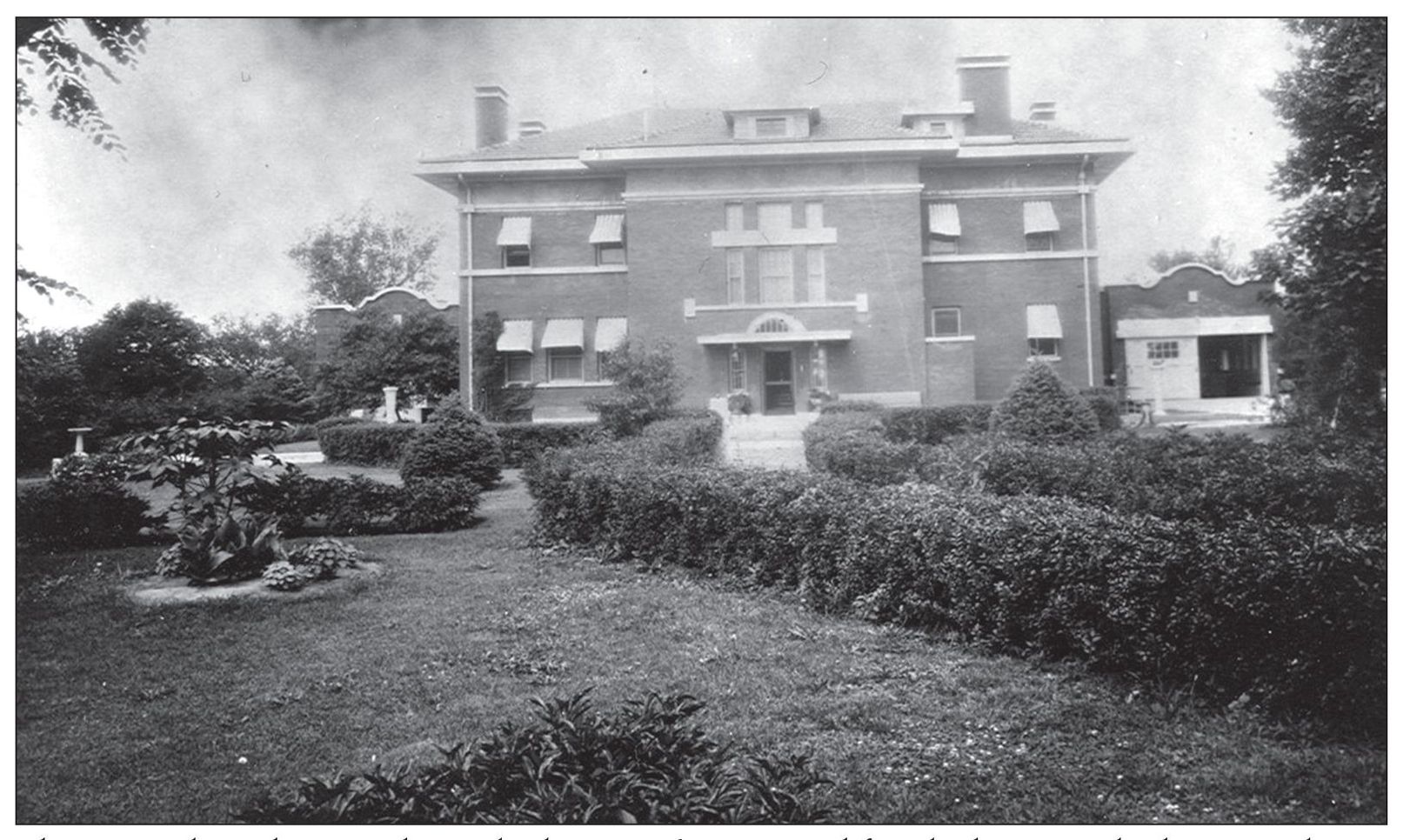
The original warden’s residence, built in 1896, contained four bedrooms, a bathroom, a living room, a kitchen, and a grand dining room. Early wardens often entertained and were considered part of the upper social class of Leavenworth County. There were separate quarters for the inmates who worked for the warden’s wives. Wardens resided here until the early 1960s when a new residence was built. Since then, this has been an officers’ bachelor’s quarters and is currently used as the staff fitness center. (Author’s collection.)
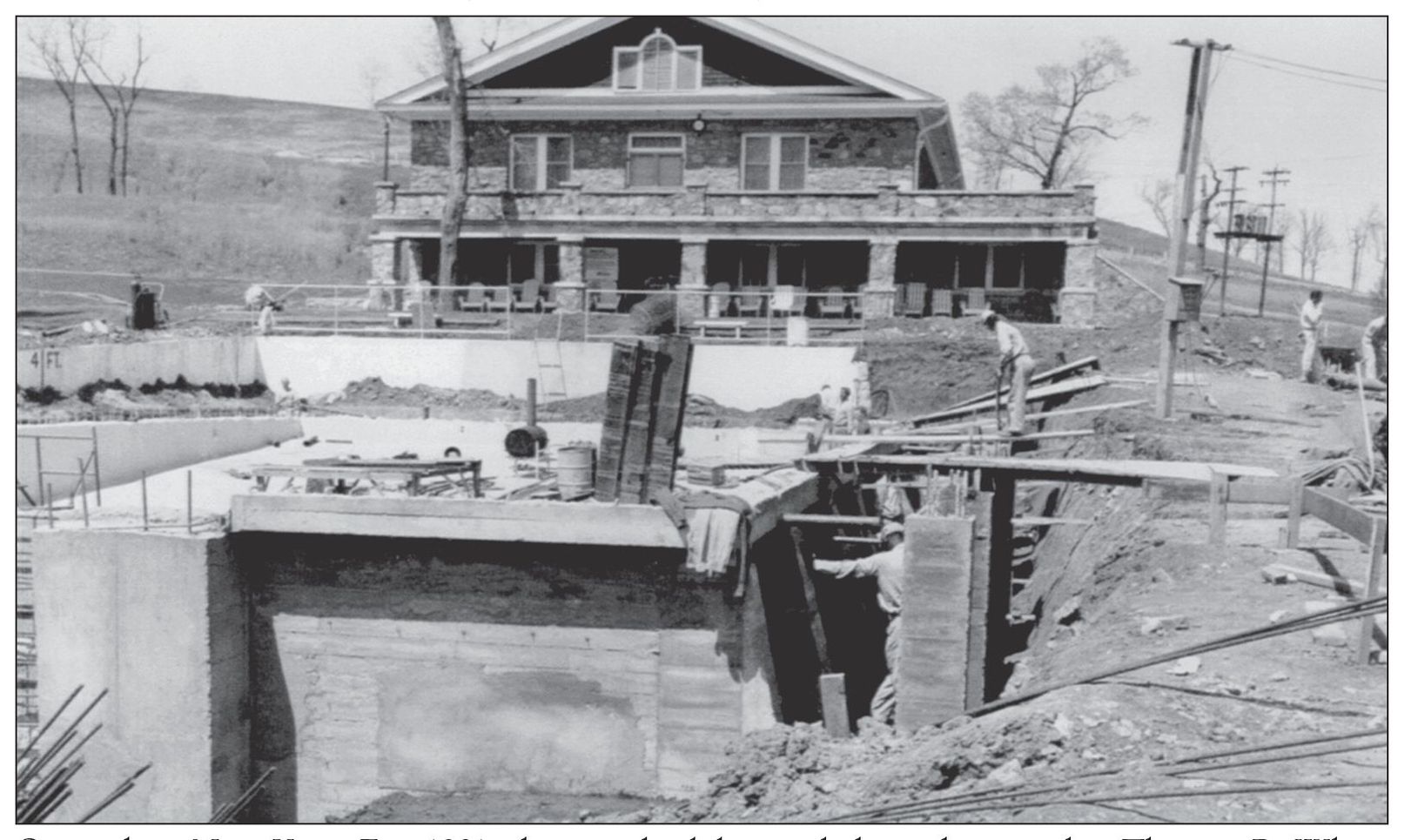
Opened on New Years Eve 1931, the guards club was dedicated to warden Thomas B. White who was recovering from his injuries sustained a few weeks earlier during an escape. The guards club features a kitchen, a serving area, a dining area, a swimming pool, a ball field, indoor and outdoor firing ranges, a bowling alley, and a sun porch. A small apartment housed the club’s caretaker. (Courtesy Gail Leavitt.)
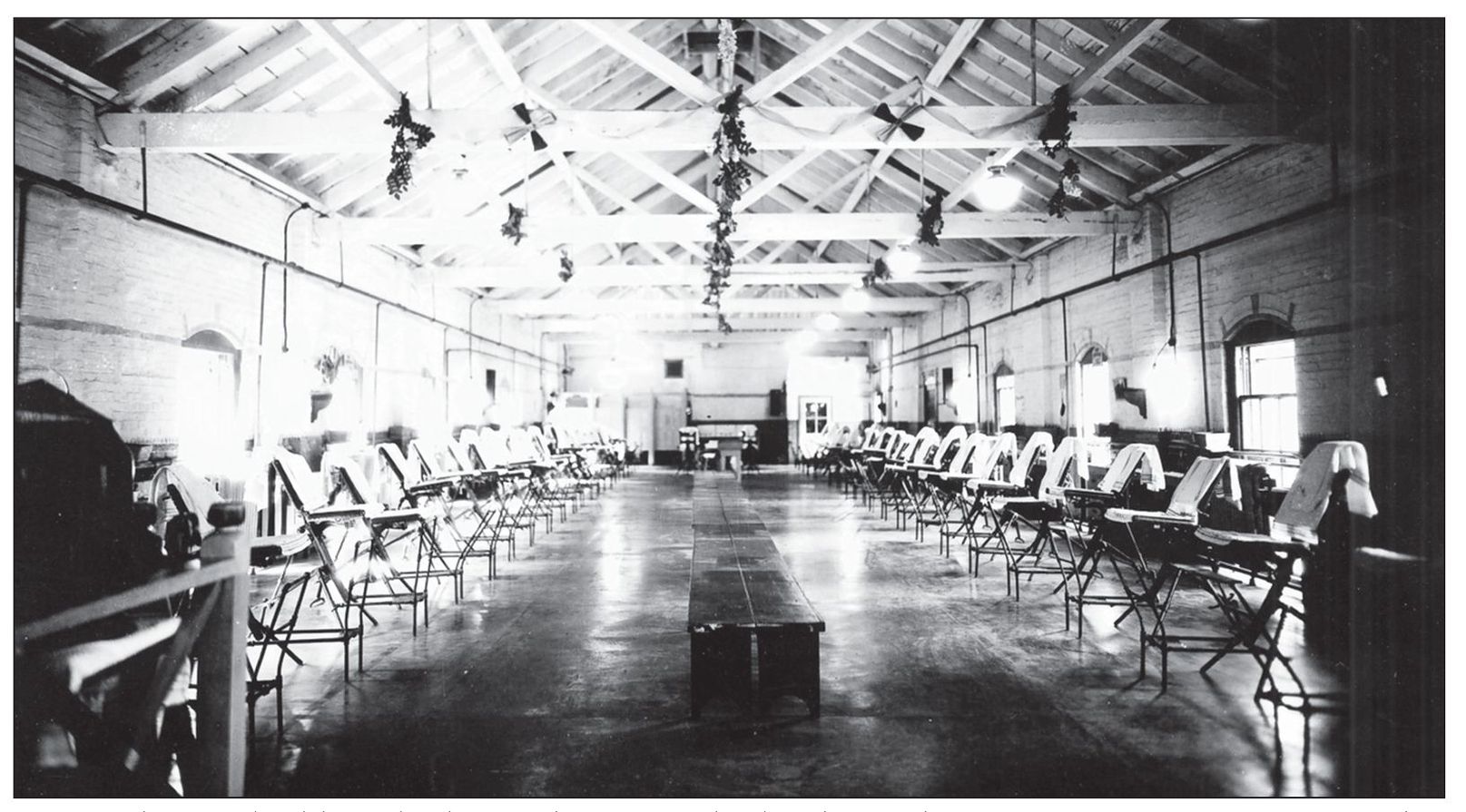
One of the first buildings built was the inmate barbershop. This was an inmate’s first stop on his journey inside Leavenworth. Inmates had their faces and heads shaved and were issued their first clothes. They were also issued a bible, cup, mirror, cuspidor, towel, one piece of hard soap, comb, brush, mattress, bed sheet, blanket, pillowcase, nightshirt, camp stool, water jar with cover, and a book of rules. In their cells, they were permitted one electric light, one small library shelf, a library catalog, and such school books, library books, and family photographs as their conduct or grade privileges permitted. (Author’s collection.)
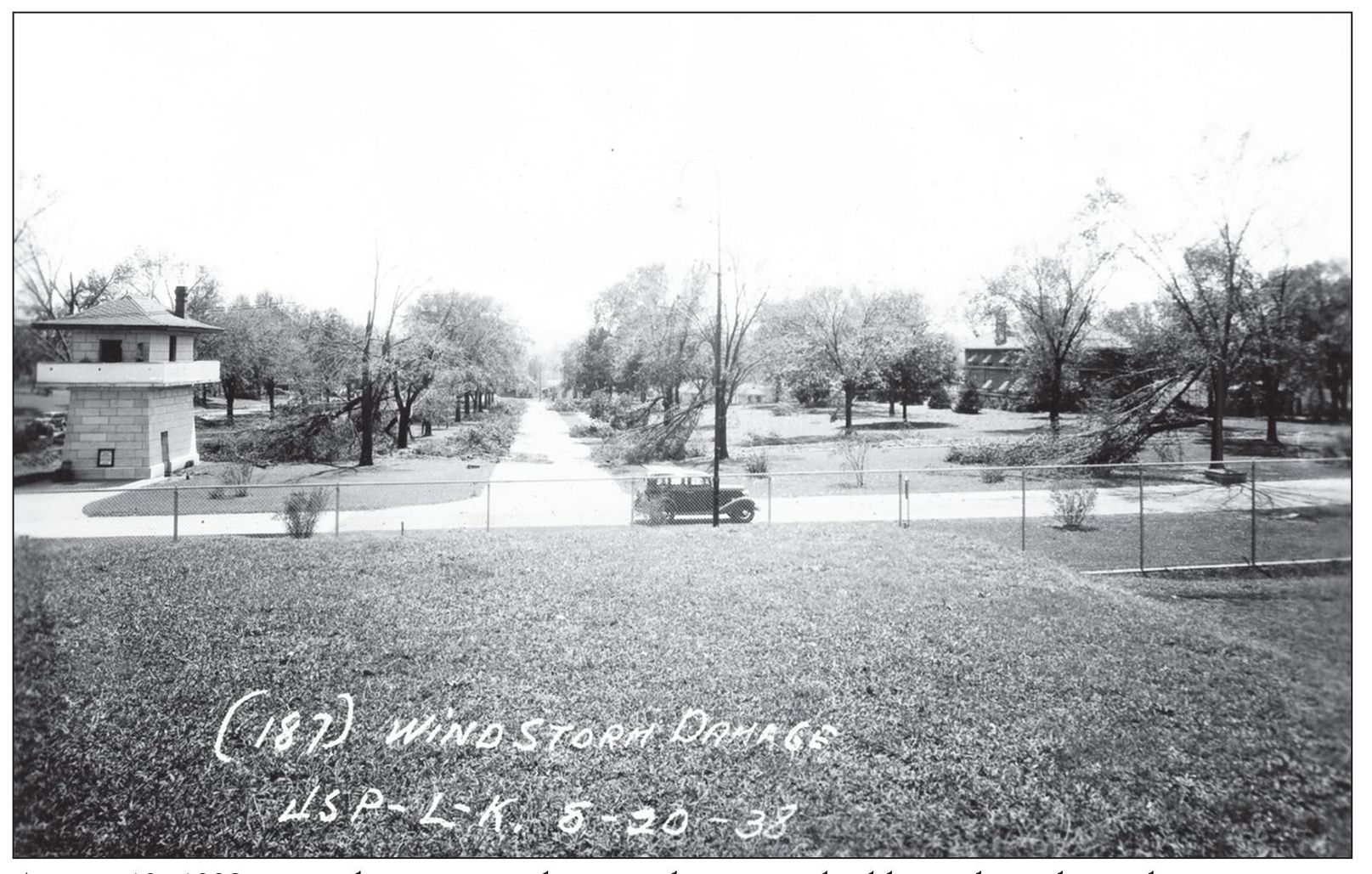
August 19, 1938, a windstorm caused severe damage to buildings throughout the institution. Trees were uprooted or damaged, the farm sustained heavy flooding, and two mules died when struck by lightening. The broom factory and ice plant were total losses. Damage estimates totaled more that $100,000. (Author’s collection.)
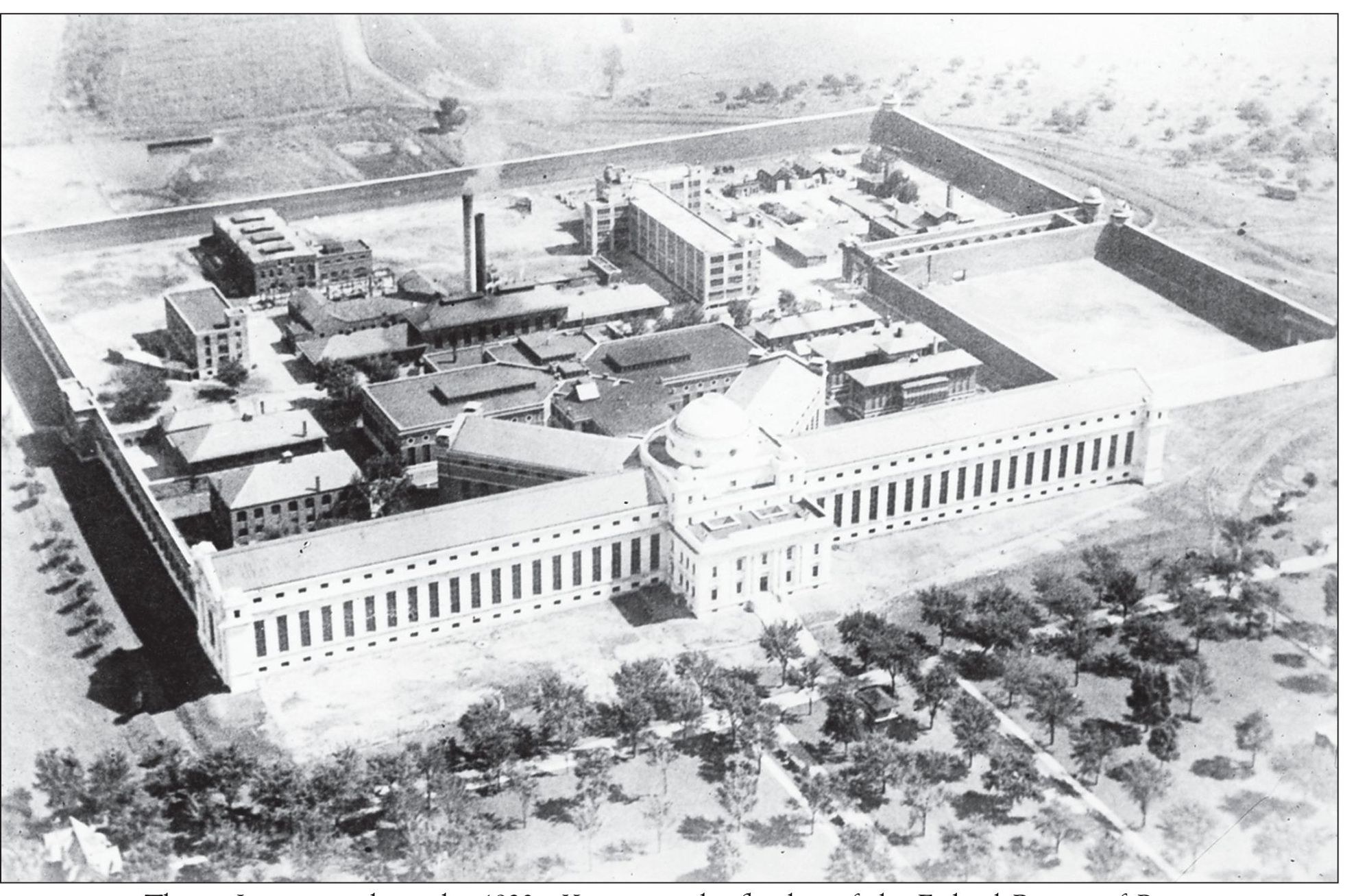
This is Leavenworth in the 1930s. Known as the flagship of the Federal Bureau of Prisons, Leavenworth has served not only as a penitentiary but also as a training ground from which other institutions have grown. It was home to the National Bureau of Identification and was the first training facility for fingerprinting in the United States. It was a regional training facility of custodial officers from Tucson, Arizona; La Tuna, Texas; Terre Haute, Indiana; and Springfield, Missouri. Training schools for storekeepers and junior farmers were also conducted at Leavenworth. (Author’s collection.)